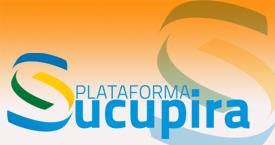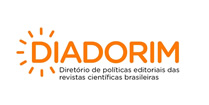Journal Policy
Periodicity
The RJTDH: Labor and Human Development Law Journal publishes annual volumes, adopting a continuous publication system (rolling pass), under which every article, review, or translation accepted for publication is immediately published in the current open volume.
Copyright
The RJTDH reserves the copyright of the published work jointly with the authors. By submitting an article to the journal, the author agrees to the free transfer of rights. Authors also declare that any work submitted, if accepted, will not be published elsewhere unless with express and complete reference to the journal’s publication.
Copyright Statement

This journal is licensed under a Creative Commons Attribution 4.0 License (CC BY 4.0).
This license allows others to remix, adapt, and build upon the work, even for commercial purposes, as long as appropriate credit is given and new creations are licensed under identical terms.
Open Access
The RJTDH is an open-access journal, meaning that all content is freely available to the user or their institution. Users are allowed to read, download, copy, distribute, print, search, or link to the full texts of the articles, or use them for any other lawful purpose, without requesting prior permission from the publisher or the author. This is in accordance with the definition of open access of the Budapest Open Access Initiative (BOAI).
This journal is licensed under a Creative Commons Attribution 4.0 License (CC BY 4.0).
Archiving
he Revista Jurídica Trabalho e Desenvolvimento Humano uses the LOCKSS [Lots Of Copies Keep Stuff Safe] system for its digital preservation. LOCKSS was developed by Stanford University to automatically create replicas of journal files on remote servers. This system enables the creation of permanent journal archives for preservation and restoration purposes. The RJTDH is part of the network created by the Public Knowledge Project Preservation Network (PKP PN), and its digital preservation can be verified by clicking on “ARCHIVAL STATUS” on the journal’s ISSN page or through its Publishing Manifesto.
The PKP developed PKP PN to digitally preserve journals published in OJS. PKP PN ensures that journals not included in any other digital preservation service can be preserved for long-term access. It allows OJS journal managers to register their journals for inclusion in the PKP PN simply by enabling a plugin in their OJS installation and agreeing to the terms of the Preservation Agreement.
The journal is also listed in Editorial Policy Directories, such as Diadorim.
Plagiarism and Similarity
As part of its commitment to upholding academic integrity and preventing plagiarism, the Revista Jurídica Trabalho e Desenvolvimento Humano uses a text similarity detection service, with the main tool being the CopySpyder platform.
Authors’ Contributions
At the time of submission, the submitting author is required to complete a statement describing the effective contribution of each author to the submitted manuscript, in accordance with the CRediT Taxonomy. The purpose of this taxonomy is to promote transparency regarding the contributions of authors to scientific work.
The CRediT Taxonomy defines 14 types of collaboration, which must be attributed to the authors according to their participation in the development of the submitted text:
- Conceptualization: Formulation or evolution of overarching research goals and aims.
- Data curation: Management activities to annotate (produce metadata), scrub data, and maintain research data (including software code, where necessary for interpreting the data itself) for initial use and later reuse.
- Formal analysis: Application of statistical, mathematical, computational, or other formal techniques to analyze or synthesize study data.
- Funding acquisition: Acquisition of the financial support for the project leading to this publication.
- Investigation: Conducting a research and investigation process, specifically performing the experiments or data/evidence collection.
- Methodology: Development or design of methodology; creation of models.
- Project administration: Management and coordination responsibility for the research activity planning and execution.
- Resources: Provision of study materials, reagents, materials, patients, laboratory samples, animals, instrumentation, computing resources, or other analysis tools.
- Software: Programming, software development, designing computer programs; implementation of the computer code and supporting algorithms; testing of existing code components.
- Supervision: Oversight and leadership responsibility for the research activity planning and execution, including mentorship external to the core team.
- Validation: Verification, either as part of the activity or separately, of the overall reproducibility/replicability of results/experiments and other research outputs.
- Visualization: Preparation, creation, and/or presentation of the published work, specifically visualization/presentation of the data.
- Writing – original draft: Preparation, creation, and/or presentation of the published work, specifically writing the initial draft (including substantive translation).
- Writing – review & editing: Preparation, creation, and/or presentation of the published work by those from the original research group, specifically critical review, commentary, or revision—including pre- or post-publication stages.
The absence of a contribution that fits at least one of the aforementioned forms of collaboration disqualifies the indication of authorship for a submitted or published manuscript, constituting non-compliance with the publication policies and ethical guidelines of the RJTDH










